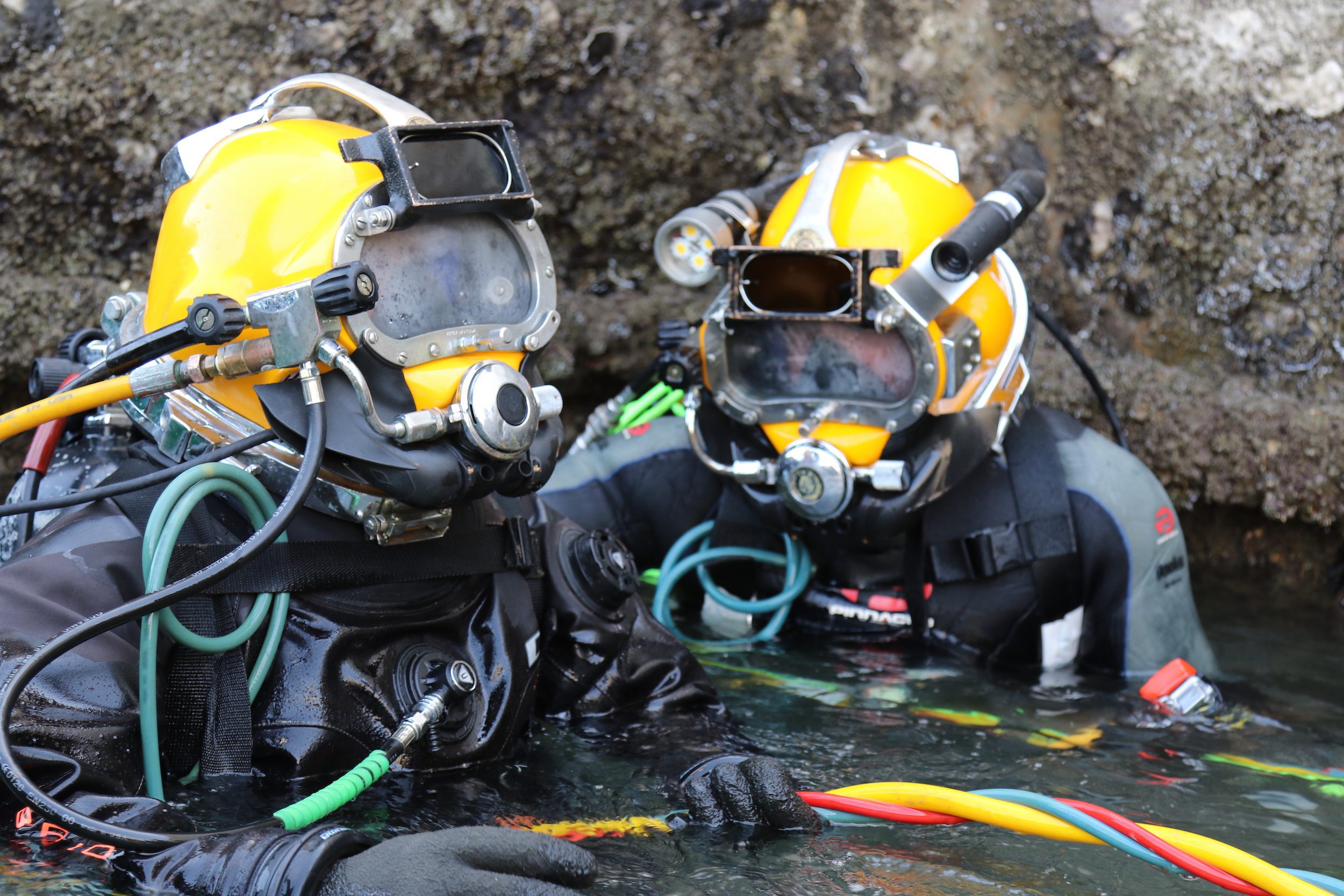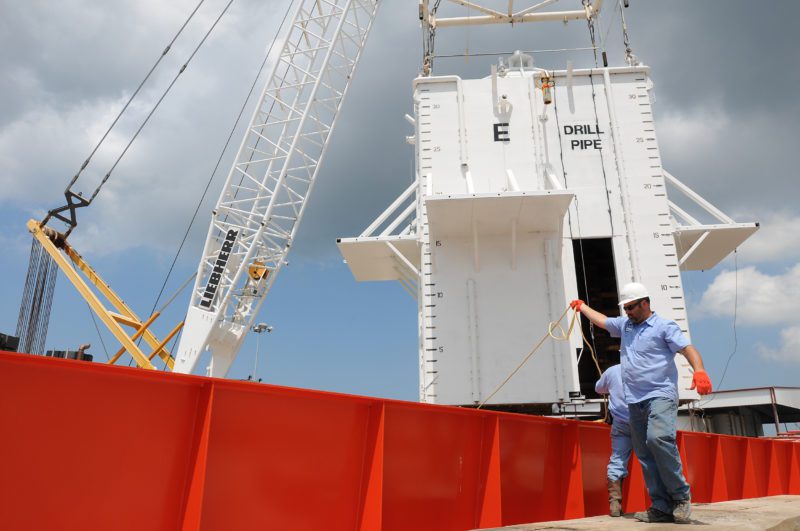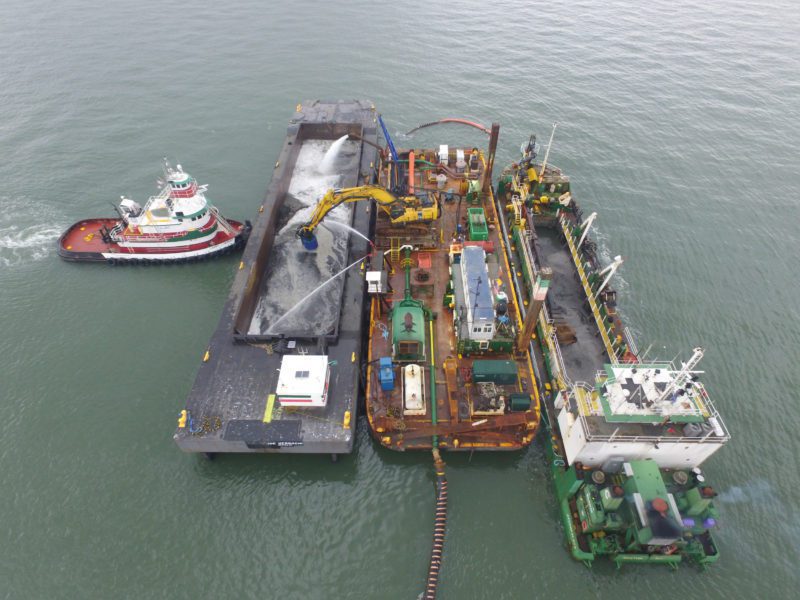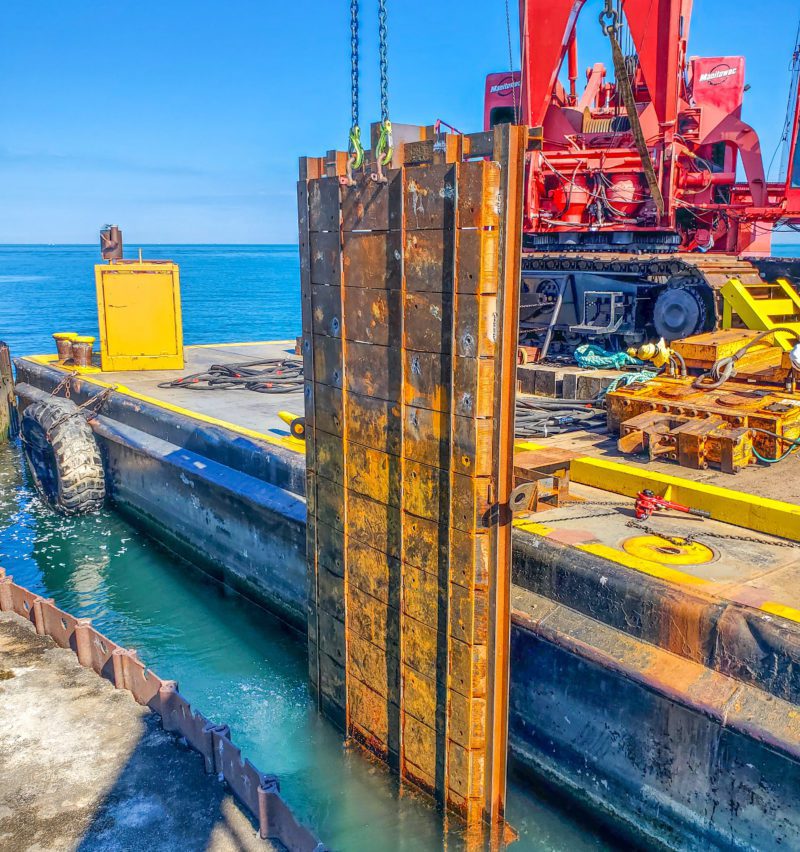How Are Structures Built Underwater?
View Source
Daniel Dawley 569th Engineer Dive Detachment diver and Lt. Mubarak Abuhaimad prepare for their dive to begin an underwater welding project at Kuwait Naval Base, Kuwait November 29, 2017. (U.S. Army photo by Charles Highland)
How Are Structures Built Underwater?
Total Views: 2551
February 23, 2022
Despite being beautiful and useful, rivers, lakes, harbors, and oceans are not always the best places to build. Tools and construction materials work better when they are above water and dry but many types of infrastructure we depend on every day are built below water, including wharves, bridges, tunnels, and docks. How do they do it?
Today, underwater construction can be accomplished by divers, but professional diving is dangerous, and the types of tools and equipment that can both function underwater and be safely used by divers are fairly limited. Remote underwater vehicles (ROVs) and other types of submersible equipment are a modern alternative, but they are expensive and are limited in what they can do.
For these reasons, most underwater construction involves removing the water from the build site, so you aren’t building underwater at all. In the construction industry, this is called dewatering and includes a variety of equipment and techniques used for safe and sound building in water-logged areas where it would otherwise be infeasible or impossible to build.
Constructiuon Cofferdams

Historically, construction sites have been dewatered by sinking a prefabricated cofferdam at the construction site. Cofferdams are enclosed structures from which water is pumped to expose the bed of a water body, allowing the construction of piers or other hydraulic works. In most cases, cofferdams are temporary barriers in or around a body of water which allows the process of de-watering, diversion, or damming of water within the enclosure. Cofferdams are temporary structures that are removed when construction is finished.
Earthen Berms

A simpler method is often preferred: building an earthen berm. In simple terms, a berm is simply a level space, shelf, or raised barrier, usually constructed of compacted soil, separating areas in a vertical manner, like a dam underneath the water. It can be built simply by filling an embankment with soil – collected from a Dredging barge or ship – and dumped it into the water.
Earthen berms have two major drawbacks. First, the soil and rocks needed to construct a berm are permeable, so you need to constantly pump out the water that does manage to seep through. Second, wet uncompacted soil is not very strong, so it needs to be reinforced before workers go inside. As a result, while they look simple, underwater earthen berm structures require careful engineering to make sure they are safe for workers and equipment.
Sheet Piles

Instead of soil, sheet piles – which are steel plates that are blocked together – are a type of retaining wall which can be used to create a berm-like structure. These are driven into subsurface soils with a huge hammer to create a watertight barrier. Sometimes sheet piles are used to create small individual enclosures filled with soil called a cellular cofferdam. They can also be built of steel frames with a membrane or even water-filled rubber bags.
Underwater Foundation Systems

Avoiding dewatering altogether is a more permanent and safer alternative. One of the methods to avoid dewatering is the use of drilled shafts. Engineers use special equipment and construction techniques to excavate holes, install reinforcing steel, and then fill them with concrete to build an extremely strong foundation system that is essentially water-tight.



